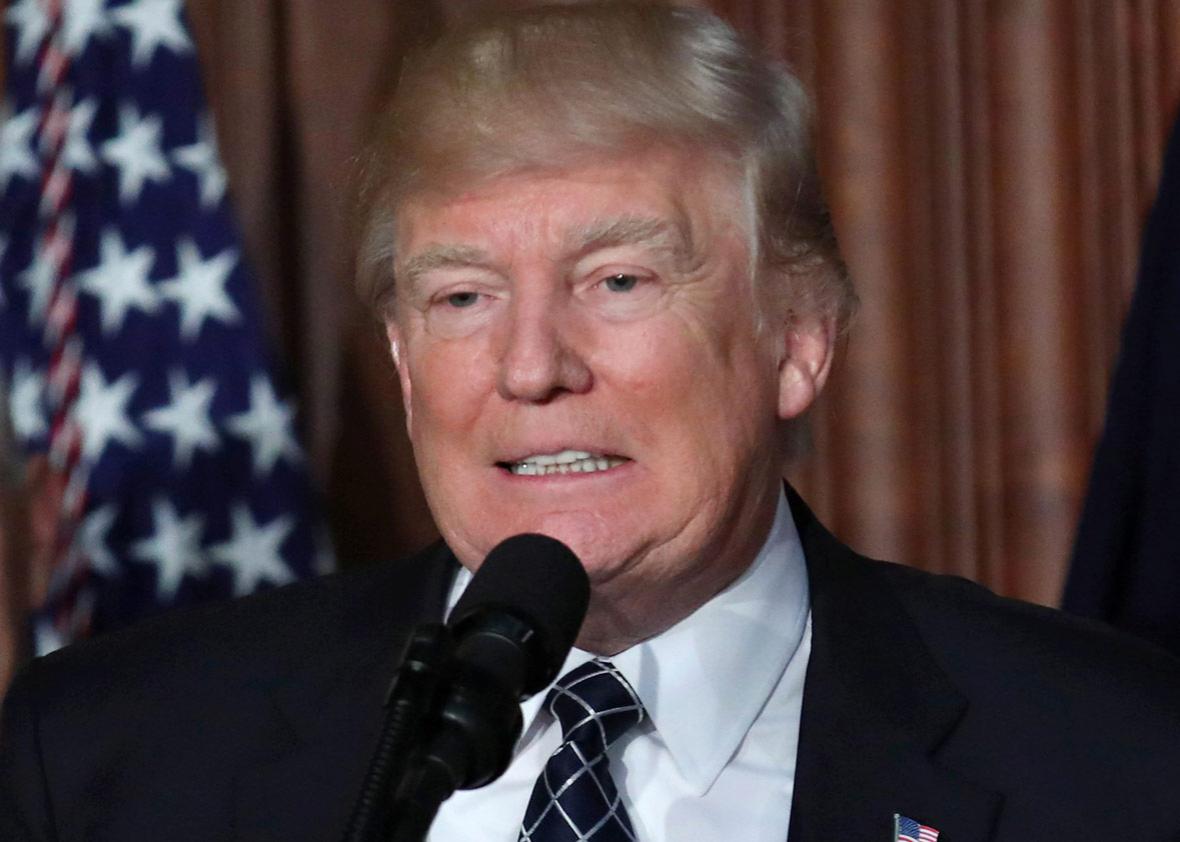Donald Trump began Thursday morning as he often does, with a tweet. “The Freedom Caucus will hurt the entire Republican agenda if they don’t get on the team, & fast,” he said, adding: “We must fight them, & Dems, in 2018!”
This came after another tweet, sent last weekend, where the president launched another attack on those same members, as well as the organizations that support them over their opposition to his health care bill. “Democrats are smiling in D.C. that the Freedom Caucus, with the help of Club for Growth and Heritage, have saved Planned Parenthood & Ocare!”
At least in the modern era, it is highly unusual for a president to go after co-partisans in such an aggressive, public manner. But Trump, still reeling from his health care defeat and mounting questions over his campaign’s ties to the Russian government, needs a scapegoat for his own mistakes and failings. Which makes the Freedom Caucus, a collection of hard-right lawmakers in the House of Representatives who helped sink the health care bill, a prime target.
The immediate problem for the president, however, is that his threats and promises are almost worthless. After telling the public that there would be a vote on health care—and threatening Republican lawmakers over their failure to hold that vote—Trump flinched. He abandoned the plan, with little in the way of explanation, although we know from subsequent reporting that House Speaker Paul Ryan failed to see the wisdom in forcing his members to take a public view on an unpopular, doomed bill. And tweets aside, he brought nothing to bear against the members who blocked his bill. The president had made a threat that he wouldn’t, or couldn’t, carry out.
As a negotiator and politician, it’s possible to recover from such a blow to your credibility. But you need to pick your battles. Which makes this fight with the Freedom Caucus even more unwise. Put simply, Trump lacks leverage. There are no Trumpist super PACs dedicated to cultivating pro-Trump candidates; there are no pro-Trump institutions willing to cross other factions within the Republican Party. Just the opposite: Most Freedom Caucus members come from highly conservative districts where they are well-liked and well-positioned against any potential primary challengers. And while, as FiveThirtyEight notes, Trump beat his opponents in 20 of the 32 Freedom Caucus districts during the Republican presidential primaries, he has focused his fire on those members from districts where he was weakest. Along with his Thursday tweet, for example, he also went after Freedom Caucus figureheads Reps. Raúl Labrador, Jim Jordan, and Mark Meadows. They are more vulnerable than most Freedom Caucus members, and Trump did well in their districts, but they are still on firmer political ground than the president.
Additionally, given the Freedom Caucus’ near–veto power over legislation in the House, Donald Trump needs its members to back his agenda. But politically, they don’t need him, which gives them the leverage in this relationship, such that it exists. Indeed, this gets to something that Trump has had a hard time grasping in his 70 days as president of the United States. Despite the trappings of the office and the respect it confers, he is not a king. He is an elected executive who, by design, must work with elected lawmakers to craft policy and achieve results. Those lawmakers have their own constituents and their own concerns, both shaped by and independent of partisanship. Trump, in other words, needs to win them over. But as we saw with the health care fight, he may not have the skills required to convert those opponents to allies.
As long as this dynamic is in place, it’s hard to imagine how Republicans move forward on their other agenda items. Compared with comprehensive tax reform, for example, health care should have been an easy lift. But both Trump and Ryan have announced their plans to pursue the former, even as they enter the field with different goals and agendas. To succeed, they’ll have to learn from the failures of the American Health Care Act. Thus far, it’s not clear that they have.
Hovering over all these battles is another, inconvenient fact: Donald Trump is unpopular. His average job approval hovers at just over 40 percent. His average disapproval stands at just over 53 percent. His low ebb, in polling, is 36 percent—the lowest on record for a new president. And he’s embroiled in a web of scandals, each of which promises to damage—even cripple—his administration. In just two short months, Trump has ridden his arrogance, ignorance, and indifference to near-disaster.
To make progress—to reverse this freefall—the president needs a clear strategy, skilled advisers, and a hefty dose of humility—keen knowledge of his limits and the limits of his office. The presidency is a hands-on job, and Trump can’t just license his name to any legislation that comes out of the House. He needs to work with Congress, not jettison responsibility. If he can do all of this—if he can, essentially, unlearn the habits of his entire adult life—then there’s a chance he can salvage his presidency and live up to his own rhetoric.
Fortunately for Donald Trump’s opponents, the old aphorism is largely right: You can’t teach an old dog new tricks. If Trump ever makes his way from rock bottom, it will have to be on his own terms, in his own way. And a quick survey of Trump’s career in business and public life shows us one thing: That probably won’t happen.
